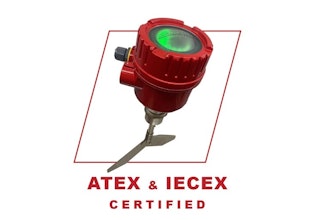Modern manufacturing facilities are constantly required to produce higher quality products in shorter durations to keep up with the rising demand of the growing population. In order to do so, manufacturing firms need to regularly update their processes and equipment to bring about operational efficiency. One way to do so is by automating certain aspects of the manufacturing process. Take a look at some of the processes that can be optimized using automation:
Pallet Handling
Operations that require pallet handling or de-pallatization require a lot of manpower and often lead to mishaps. In fact, a large chunk of industrial injuries have been attributed to heavy lifting and manipulating heavy objects. So in order to optimize operations and reduce accidents, you can use the following process optimization processes:
No. 1 - Pallet Positioners
One of the easiest and low cost ways to improve the ergonomics of your manufacturing process is by adding pallet handling solutions such as positioners that can lift, rotate and turn heavy pallets and place them in positions that make the loading process convenient.
No. 2 - Robotic Palletizing/De-Palletizing
Another way to automate the pallet handling process is by including robotic palletizing or de-palletizing solutions depending on your organization's needs. Case palletizing, bag palletizing, mixed load palletizing are some of the machines that are not only used to improve productivity but also reduce the need for human intervention and reduce changes of mishaps or error.
No. 3 - Conveyor Rollers
You can also incorporate conveyor rollers in your assembly line as they can help you moderate your batches. You can also incorporate weighing scales in your conveyor rollers to check the weight of each pallet and related specifications during the process itself and can notify the administrator in case of defects or deviations. This allows you to maintain your quality standards and reducing the need for an additional quality control process/personnel thus saving time and costs.
Product Transportation
Manufacturing plants are large in terms of area and size which often require transportation of products from one unit to another. In such cases, you can implement one of the following methods to quicken the process:
No. 1 - Automated Guided Vehicles
Automated guided vehicles or AVGs can be used to pull or carry large loads and are commonly used by manufacturers to transport products within the manufacturing unit. These vehicles reduce the need for human intervention and quicken the overall manufacturing process.
No. 2 - Conveyor Belts
If your plant doesn't have the space and functionality to implement AVGs, you can also incorporate conveyor belts to transport the material from one place to another. There are various types of belts such as plastic belts, cleated belts, wire mesh belts and they also include multiple features such as integrated photo-eyes, proximity sensors, conveyor belt scales that provide a number of benefits that enable you to route products in a cost-effective manner.
No. 3 - Shuttle Systems
Another great way to transport materials from one place to another is by implementing a shuttle system. You can utilize robotic shuttles and rails to transport goods and raw materials through the facility. You can place the rail on the ground or even overhead in facilities that have space constraints.
As you can see, by implementing any of the methods mentioned above, not only will you impact the overall output of the firm but you will also be able to reduce the overall cost implications through the additional output that your plant will be able to generate.
Kevin Hill heads the marketing efforts at Quality Scales Unlimited.























